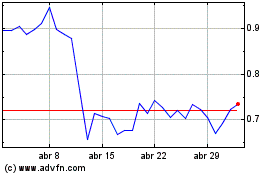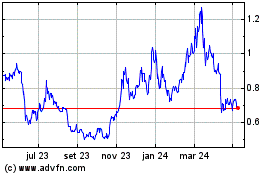Here Are The Major Drivers Behind The Bitcoin Price Recovery Above $42,000
27 Janeiro 2024 - 8:00PM
NEWSBTC
Bitcoin recently surged above $42,000, having traded below $40,000
for several days. This market recovery is believed to be a result
of different factors, including recent revelations about the US
economy. Macroeconomic Factors That Contributed To The Recent
Bitcoin Surge The personal income expenditures (PCE) price index, a
leading inflation indicator, was released on January 26 and
reported to have been lower than expectations. This suggests that
inflation in the United States is cooling off, and experts predict
that the Federal Reserve will likely reduce their aggressive
monetary policies. The Fed’s hawkish stance is known to have
a negative effect on Bitcoin’s price and the broader crypto market.
As such, this recent development is a positive one and is something
that could have influenced investors to double down on their
investments in the flagship cryptocurrency, thereby sparking a
price surge. Related Reading: Report Shows Polygon Users
Rivaled Ethereum In 2023, But Why Has Price Failed To Clear $1?
Meanwhile, data from the US Treasury recently showed that the
country has hit an all-time debt of $34,1 trillion. While this has
raised concerns about the looming crash of the US dollar, it has
also presented Bitcoin and other cryptocurrencies as a haven to
hedge against the potential devaluation of the nation’s
currency. Interestingly, different financial analysts,
including renowned economist Peter Schiff, have continued to
predict the imminent crash of the US dollar. In light of this,
finance author Robert Kiyosaki has urged everyone to invest in
Bitcoin to avoid becoming poorer due to the government’s
actions. Another factor believed to have contributed to
Bitcoin’s recent surge is the expiration of monthly BTC options
contracts on Deribit. The expiry outcome more than likely played a
crucial role in Bitcoin’s rally, considering that CryptoQuant CEO
Ki Young Ju had pinpointed the derivatives market as responsible
for Bitcoin’s recent decline. BTC price jumps after
downtrend | Source: BTCUSD on Tradingview.com GBTC’s Outflow Slows
For The Fourth Consecutive Day Grayscale’s GBTC saw an outflow of
just $255.1 million on January 26, continuing a recent trend of
reduced outflows from the fund. NewsBTC reported how the Bitcoin
ETF had seen outflows of $515 million, $429 million, and $394
million on January 23, 24, and 25, respectively. Related Reading:
Ripple CTO Explains How AMM Feature Will Enable XRP Holders To Earn
Passive Income As noted by Bloomberg analyst James Seyffart,
January 26 also happened to be the lowest outflow day for GBTC
since converting to a Spot Bitcoin ETF. This development suggests
that the fund’s investors may be cooling off on taking profits. It
is also significant because Grayscale has contributed to the
selling pressure that has plagued Bitcoin of late. At the
time of writing, Bitcoin is trading at around $41,700, up over 4%
in the last 24 hours according to data from CoinMarketCap. Featured
image from U.Today, chart from Tradingview.com
Polygon (COIN:MATICUSD)
Gráfico Histórico do Ativo
De Mar 2024 até Abr 2024

Polygon (COIN:MATICUSD)
Gráfico Histórico do Ativo
De Abr 2023 até Abr 2024
